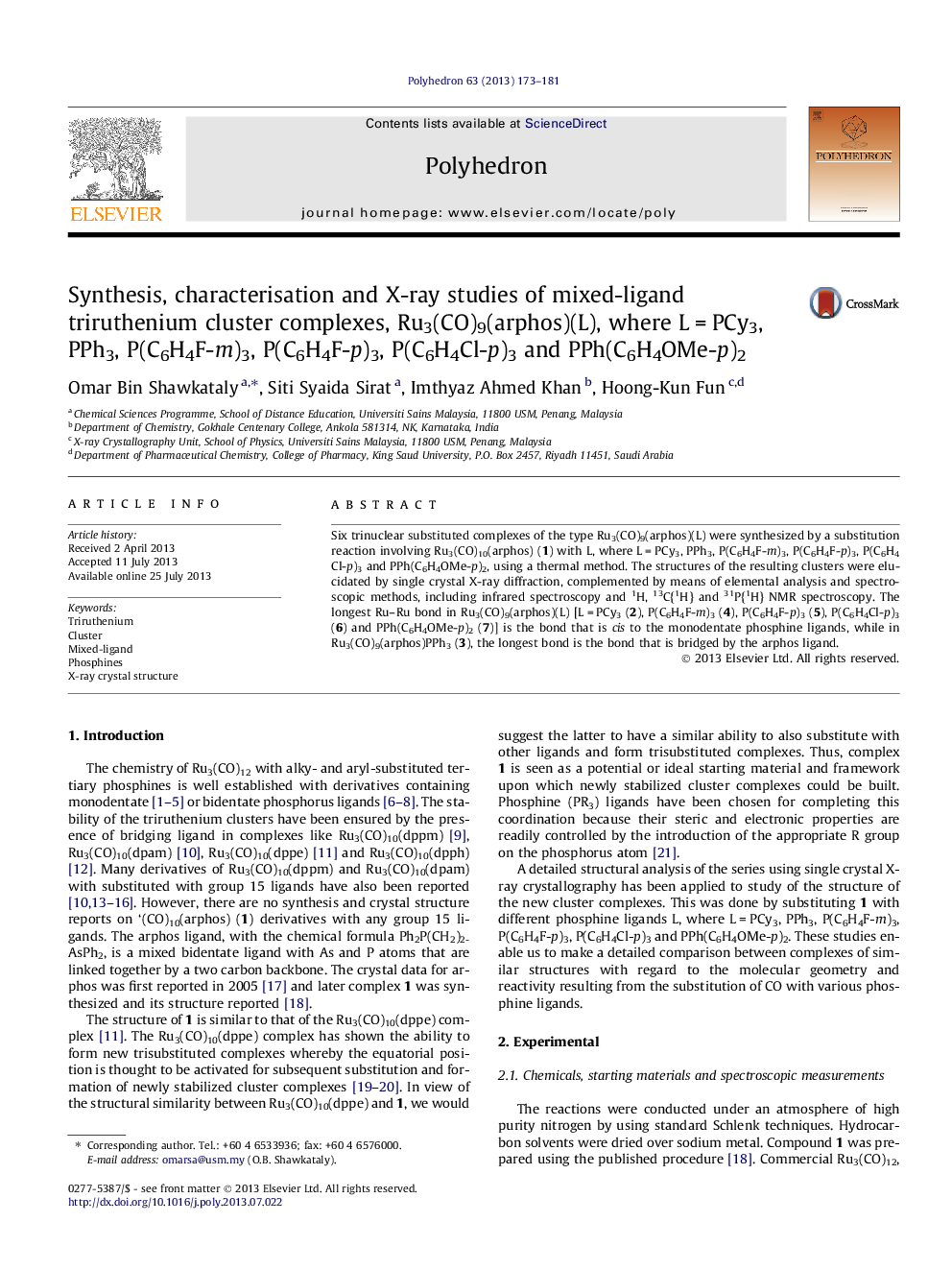| Article ID | Journal | Published Year | Pages | File Type |
|---|---|---|---|---|
| 1335572 | Polyhedron | 2013 | 9 Pages |
Six trinuclear substituted complexes of the type Ru3(CO)9(arphos)(L) were synthesized by a substitution reaction involving Ru3(CO)10(arphos) (1) with L, where L = PCy3, PPh3, P(C6H4F-m)3, P(C6H4F-p)3, P(C6H4Cl-p)3 and PPh(C6H4OMe-p)2, using a thermal method. The structures of the resulting clusters were elucidated by single crystal X-ray diffraction, complemented by means of elemental analysis and spectroscopic methods, including infrared spectroscopy and 1H, 13C{1H} and 31P{1H} NMR spectroscopy. The longest Ru–Ru bond in Ru3(CO)9(arphos)(L) [L = PCy3 (2), P(C6H4F-m)3 (4), P(C6H4F-p)3 (5), P(C6H4Cl-p)3 (6) and PPh(C6H4OMe-p)2 (7)] is the bond that is cis to the monodentate phosphine ligands, while in Ru3(CO)9(arphos)PPh3 (3), the longest bond is the bond that is bridged by the arphos ligand.
Graphical abstractSix trinuclear substituted complexes of the type Ru3(CO)9(arphos)(L) were synthesized by a substitution reaction involving Ru3(CO)10(arphos) (1) with L, where L = PCy3, PPh3, P(C6H4F-m)3, P(C6H4F-p)3, P(C6H4Cl-p)3 and PPh(C6H4OMe-p)2, using a thermal method. The structures of the resulting clusters were elucidated by single crystal X-ray diffraction, complemented by means of elemental analysis and spectroscopic methods, including infrared spectroscopy and 1H, 13C{1H} and 31P{1H} NMR spectroscopy. The longest Ru–Ru bond in Ru3(CO)9(arphos)(L) [L = PCy3 (2), P(C6H4F-m)3 (4), P(C6H4F-p)3 (5), P(C6H4Cl-p)3 (6) and PPh(C6H4OMe-p)2 (7)] is the bond that is cis to the monodentate phosphine ligands, while in Ru3(CO)9(arphos)PPh3 (3), the longest bond is the bond that is bridged by the arphos ligand.Figure optionsDownload full-size imageDownload as PowerPoint slide
